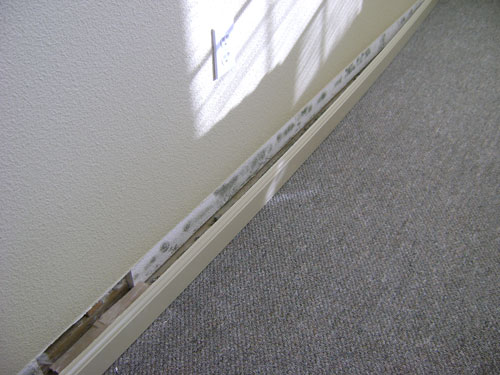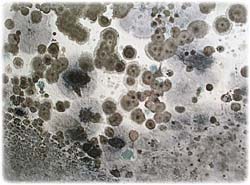Mold Facts
 Environmental Molds
Environmental Molds
In the past few years, there has been a dramatic increase in the number of illnesses associated with mold. Although mold contamination has been given little attention until recently, an increasing proportion of building-related illness (BRI) and sick building syndrome (SBS) in the home and workplace is thought to be the result of exposure to molds and/or their toxins. As homes and workplaces are made more and more airtight due to increased weatherization and insulation, there has been a related increase in indoor air quality issues due to the buildup of mold in the indoor environment. If moisture becomes trapped inside a building due to water intrusion, vapor barrier problems, or lack of proper ventilation, the potential for mold growth becomes significant. Mold contamination can cause numerous health problems including respiratory problems, headaches, dizziness, allergic reactions, and nausea.
If you have mold contamination in your home or workplace, it is imperative that it be eliminated, along with any moisture problems that may have been responsible for the mold growth in the first place. Allowing mold to grow unabated in the home or workplace environment can not only cause irreparable damage to the physical substrate on which it is growing, it can cause or exacerbate a wide variety of illnesses in the occupants of the building, particularly those who may be immmunocompromised. Since all molds are considered allergenic, reducing exposure to any elevated levels of environmental mold is critical in order to keep the possibility of contracting a mold-related illness to a minimum. Eliminating the moisture problem, then remediating any existing mold problem, will help to minimize the chances of mold-related illnesses occurring to the occupants of the affected building.
 Toxic Mold
Toxic Mold
Although many of the most common environmental molds are not toxin producing fungi, a number of molds such as Stachybotrys chartarum and several of the Aspergillus species produce potent toxins that can cause serious health problems. Previously considered to be a warm climate species, Stachybotrys chartarum is being detected in the Pacific Northwest in increasing numbers. Among the Aspergilli, A. niger, A. versicolor, and A. fumigatus all produce toxins that are capable of causing serious illness. Although there is no documented scientific evidence linking the exposure to these molds in the environment with illness, anecdotal evidence exists to suggest that extreme caution must be taken when it is known that these molds are in the indoor environment. Since they are known to produce potent toxins that can cause serious chronic illness, it is imperative that they be removed from any environment in which they are found. This is particularly true where the inhabitants may be very young, elderly, chronically ill, or immunocompromised, as these groups are much more susceptible to the variety of illnesses caused by these molds. Specific measures for the removal of these toxin-producing molds must be followed when remediation is undertaken, and these measures should be left to experts with experience in the remediation of toxin-producing molds.